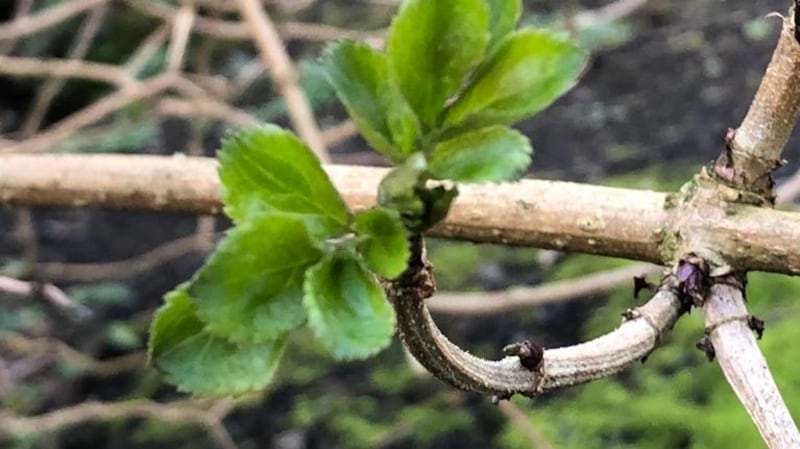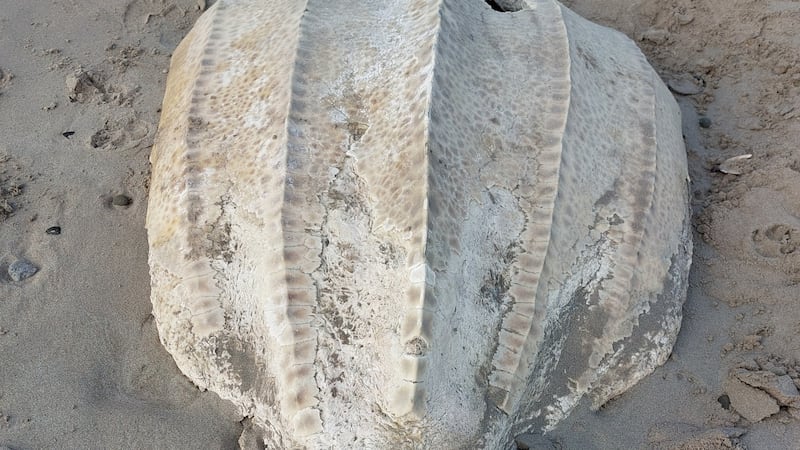I spotted this sizeable spider in the shed in February. I've just read that there are more than 45,000 species of spider out there! Hoping that Eye on Nature can identify this one. Is it the dangerous spider introduced to Ireland in recent years? – Eileen White
It is not – it is the native Eratigena duellica, often called the bath spider, whose body length can be up to 16mm. It is much larger than the noble false widow (body up to 11mm) that appeared in this column recently. The National Biodiversity Centre has records of 122 species, while 680 have been recorded for Britain.

This elder tree has been in leaf in my garden since the end of February. Is this very early? – Katherine McCarthy
The elder is one of our smaller native trees, which come into leaf earlier than bigger canopy trees. It is normal for it to be coming into leaf at this time, as it utilises the light still available under the woodland trees. Typical woodland flowers such as lesser celandine and arum lily flower are around now, too.

This was washed up on Banna Strand in Kerry. It measures about 4x2½ feet. Is it some type of turtle carapace? – Norah Blandin
It's the carapace of a long-dead leatherback turtle. Kevin Flannery of Dingle Aquarium says there have been a few washed up this year but less than a few years ago, thanks to the ban on salmon and tuna drift netting. But they still get caught in the 50 miles of hooks per vessel put out by the Japanese blue fin tuna fleet that fish outside the EU zone.

On a recent hike at Djouce mountain we spotted this frog spawn in an ice-covered pond. Will it have any chance of surviving? – John Tobin
The spawn in contact with the ice may well freeze and die, but if the pond is fairly deep, the spawn at the bottom could well survive. The warm January meant that frogs woke from hibernation early, and maybe these spawned too soon at such a high cold spot.
Have you a nature query, observation or photo you would like to share with The Irish Times? Please submit it, with location of the image, via our website irishtimes.com/eyeonnature










